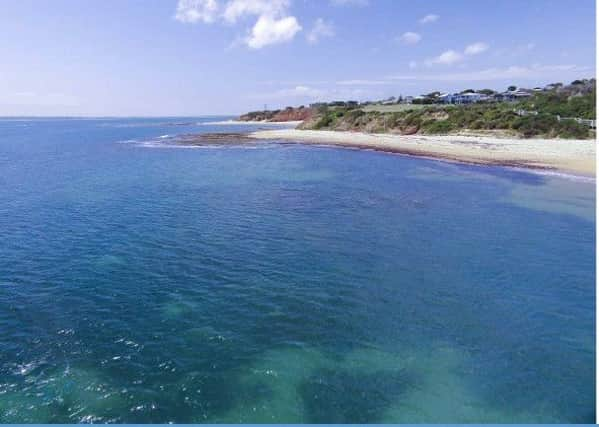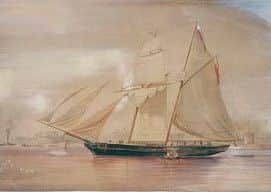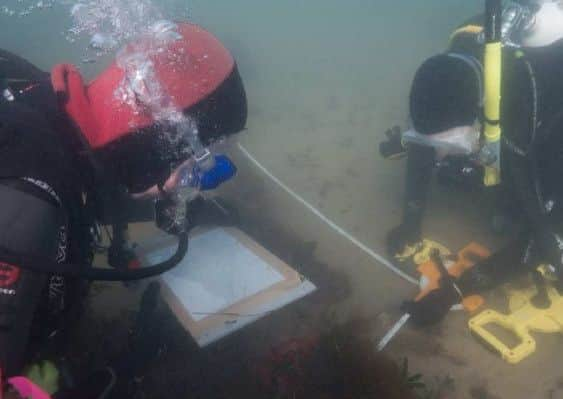Beer bottles off Melbourne told story of a lost Clyde ship
This article contains affiliate links. We may earn a small commission on items purchased through this article, but that does not affect our editorial judgement.


It was the discovery of several beer bottles off the coast of Australia that led researchers to piece together the history of a 18th Century Clyde-built sailing ship that spent its life as a workhorse of the seas.
The Leven Lass, built in Dumbarton in 1839, had sailed from Scotland to at least six continents, carrying Scottish immigrants to Canada, coal to Brazil and Africa, and came close to sinking on two occasions.
Advertisement
Hide AdAdvertisement
Hide AdIt left Scotland for good in 1852 for Australia, after the Victorian gold rush saw an influx of people and goods from Britain.


But its working life came to an end on December 13 1854 when it sprang a leak on a journey from Tasmania to Melbourne, with Captain Robert McNicol managing to steer the vessel into shallow waters just off Philip Island.
All its crew survived and most of its cargo - which included 150,000 feet of timber and eight hogsheads of ginger beer.
It was these bottles, discovered by a local diver in 1984, which prompted a 30-year interest in the Leven Lass and its significance in mid 19th Century maritime history, of which Clyde-built vessels were major players.
Chelsea Colwell-Pasch, formerly a researcher with Flinders University, has been one of the academics examining the past of the Leven Lass, which was built in 1839 by Denny and Rankine at Dumbarton.


Denny and Rankine was a small firm, headed in part by Peter Denny, who was a distant relation to those at the helm of the famous Denny shipbuilders in the town.
She said the Leven Lass was one of a breed of UK-based vessels that were no longer required for Atlantic crossings, given the rise of the steam ship, and which did not have to rely on the wind to meet a journey deadline.
Advertisement
Hide AdAdvertisement
Hide AdShips such as the Leven Lass were perfectly placed - and perfectly available - to seize on the potential of Australia’s gold rush.
She said: “What is very interesting about Leven Lass’ story in Australia is that it is a great example of the maritime climate of the mid-19th century.


“Prior to the Suez Canal opening in 1869, vessels had to take the “long way” to Australia by navigating around Cape Point, South Africa.
“The route took on average about 119 days from the UK to Australia. This journey was too long for steam ships which were dominating transatlantic travel making sailing vessels obsolete in that market.
“Now the UK was inundated with used sailing ships. In 1851 Victoria, Australia had a gold boom. Now everyone who could afford it tried to make their way to Australia and the captains of these old sailing vessels saw a perfect opportunity to get more work out of their Atlantic-obsolete vessels.


“Now Australia was inundated with older sailing vessels. Australia also had a use for them as there were no land routes between the large cities, only ports.”
Shortly after the beer bottle discovery, The shipwreck was assessed by Heritage Victoria, the Victorian state government department.
Advertisement
Hide AdAdvertisement
Hide AdMs Colwell-Pasch said Australia took its underwater cultural heritage “very seriously” which records data quickly compiled and further research conducted in 1989.
In 2012, a full field school on the wreck was carried out by Heritage Victoria (HV) and Flinders University’s Maritime Archaeology Program.
Ms Colwell-Pasch embarked on her own research in 2014 with further site visits conducted by Flinders University in 2015.
Overall, around 400 diving hours have been spent on the wreck.


She also travelled to Scotland in June 2014 to gather historic and archival information on the vessel.
Ms Colwell-Pasch, now an archaeological projects manager with the New Brunswick government in Canada, said the Leven Lass had a 15-year-career - when most ships of this type working for 12 or 13 before heading into retirement.
“The reason Australia had so many shipwrecks was the overuse of some of these used sailing vessels that probably should have retired in the UK,” she said.
